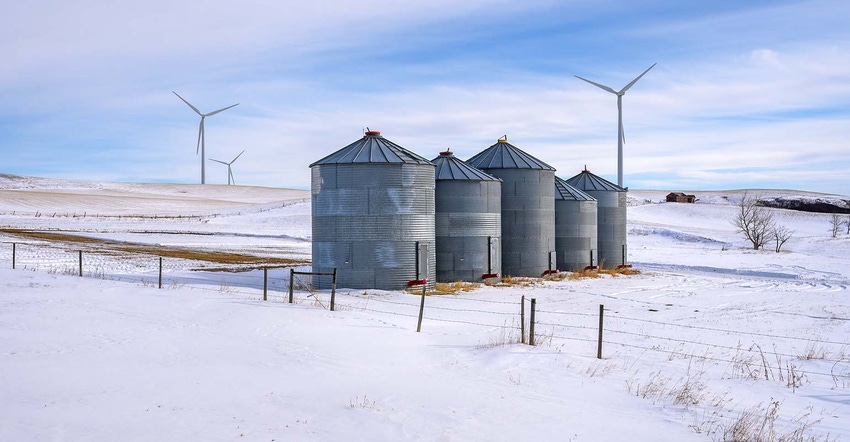
“Roger, If I bought a March corn put for 12 cents, how far can market go up before that is worthless?”
As long as an option has not expired, meaning it could still be bought, sold or exercised, there is a possibility it will increase in value, even from ‘zero’ value.
Let’s say Jim bought a March 2022 $5.30 corn put on Oct. 29, 2021 at a cost of 12 cents when March 2022 corn futures were at $5.76. With that put, Jim bought the right, but not the obligation, to sell March 2022 corn futures for $5.30 any business day he wants between the end of October 2021 and the close of CBOT business on Feb. 18th, 2022, when the March 2022 CBOT options expire.
On Monday, Nov. 1, March 2022 corn settled up 10¾ cents. Jim’s March $5.30 put settled at 8½ cents.
Since I am writing this after the close on Nov. 1 and nobody knows what the price of corn will do, let’s say March corn goes to $7.50 by the end of November. If that actually happened, the right to sell March corn at $5.30 (a $5.30 put option) will be worth one-eighth of a cent. Why?
Because with March 2022 corn at $7.50, the market thinks the chance of March 2022 corn dropping some $2.20 (to go below $5.30) by Feb. 18 is nil. Is that the same as worthless? Pretty close, yep.
Let’s say by the middle of December, March corn is $8.50. The value on the quote screen will still say the March $5.30 put is one-eighth of a cent because the option still has two months of life. But who will pay the commission plus an eighth cent to buy a put option $3.20 out of the money? No one.
So, the option is worthless because no one will buy it. However, that option is still alive because it does not expire until Feb. 18, 2022.
If Jim had sold March futures at $5.30 and held onto that futures position all the way up to $8.50, his total margin call would have been the difference between his selling price ($5.30) and $8.50, or $3.20. Why?
Because when a short (sold first and buy later) futures position is established, the seller has the right and the obligation to sell March corn futures at $5.30.
But Jim bought a March $5.30 put option which gave him the right, but not the obligation, to sell March corn at $5.30. The most Jim can lose on his option is the 12 cents he paid for it because he is not obligated to sell March corn at $5.30.
So, March corn is at $8.50 in mid-December and the $5.30 March put is worthless. Jim is really happy he lost that 12 cents a bushel on those $5.30 put options. He bought the put as price insurance for his corn in the bin. With March corn at $8.50, he is smiling ear to ear.
What about his $5.30 put? With march corn at $8.50, nobody is going to buy it. So, Jim forgets about it. He cut a fat hog when he sold his corn at $8.50 and he does not care about his price insurance policy anymore. He does not need price insurance; his corn is sold!
Three days later, let’s say President Biden suspends all ethanol operations for six months to give the American people a Christmas present of cheaper food. Jim realizes he just dodged a bullet.
About 1 p.m. on Feb. 18, 2022, Jim’s broker calls him, “Jim, what do you want to do you with those 50,000 bushels of March $5.30 puts?”
Jim asks, “I don’t know. I thought they were worthless. You told me they were worthless.”
His broker says, “When March corn was at $8.50, your March $5.30 puts were worthless. Now that March corn is $3.60, those $5.30 puts are worth $1.70 a bushel. What do you want to do with them?”
Jim asked, “What are my choices?”
“You can exercise them and be short March futures at $5.30 with a $1.70 profit or you can sell the options for $1.70.”
Jim is really confused. He was told those puts were worthless. He did not realize there was a difference between worthless and expired. The March 2022 options were viable (alive) until expiration when CBOT closes on Feb. 18.
Was Jim unprotected on a price drop when the options were worthless?
Yes and no. Jim was unprotected for the decline from $8.50 to $5.30, but everything under $5.30 was 100% protected. After Jim sold his cash corn, he did not need the protection of a price decline the puts provided.
If a worthless option has not expired, it can increase in value. So don’t forget there is a huge difference between ‘worthless’ and ‘expired.’ All COBT options expire the calendar month before futures month on the last Friday still followed by two business days the next week. Some months that will be the third Friday and some months that will be the fourth Friday.
Wright is an Ohio-based grain marketing consultant. Contact him at (937) 605-1061 or [email protected]. Read more insights at www.wrightonthemarket.com.
No one associated with Wright on the Market is a cash grain broker nor a futures market broker. All information presented is researched and believed to be true and correct, but nothing is 100% in this business.
The opinions of the author are not necessarily those of Farm Futures or Farm Progress.
About the Author(s)
You May Also Like






